First World War: Causes and Effects Essay
Introduction, the causes of world war one, the effects of the war.
World War one seems like an ancient history with many cases of compelling wars to many people, but amazingly, it became known as the Great War because of influence it caused. It took place across European colonies and their surrounding seas between August 1914 and December 1918 (Tuchman, 2004). Almost sixty million troops mobilized for the war ended up in crippling situations.
For instance, more than eight million died and over thirty million people injured in the struggle. The war considerably evolved with the economic, political, cultural and social nature of Europe. Nations from the other continents also joined the war making it worse than it was.
Over a long period, most countries in Europe made joint defense treaties that would help them in battle if the need arose. This was for defense purposes. For instance, Russia linked with Serbia, Germany with Austria-Hungary, France with Russia, and Japan with Britain (Tuchman, 2004).
The war started with the declaration of war on Serbia by Austria-Hungary. This later led to the entry of countries allied to Serbia into the war so as to protect their partners.
Imperialism is another factor that led to the First World War. Many European countries found expansion of their territories enticing.
Before World War One, most European countries considered parts of Asia and Africa as their property because they were highly productive. European nations ended up in confrontations among themselves due to their desire for more wealth from Africa and Asia. This geared the whole world into war afterwards.
Competition to produce more weapons compared to other countries also contributed to the beginning of World War One. Many of the European nations established themselves well in terms of military capacity and eventually sought for war to prove their competence.
Desire for nationalism by the Serbians also played a crucial role in fueling the war. Failure to come to an agreement about Bosnia and Herzegovina led the countries to war. Both countries wanted to prove their supremacy.
Assassination of Archduke Ferdinand and his wife in Austria-Hungary sparked the war. Tuchman (2004) reveals that the Serbians assassinated Ferdinand in Sarajevo in June 1914 while protesting to the control of Sarajevo by Austria-Hungary. The assassination led to war between Serbia and Austria-Hungary. This led to mobilization of Russian troops in preparation for war.
The already prepared Germany immediately joined the war against Russia and France. On the other hand, Russians declared war on Austria and Germany. The invasion of the neutral Belgium by Germany triggered Britain to declare war against Germans.
Earlier, Britain had promised to defend Belgium against any attack. The British entered France with the intention of stopping the advancement of Germany. This intensified the enmity among the countries involved (Tuchman, 2004).
Tuchman (2004) argues that the French together with their weak allies held off the fighting in Paris and adopted trench warfare. The French had decided to defend themselves from the trenches instead of attacking. This eventually gave them the victory.
Although The British had the largest number of fleet in the world by the end of 1914, they could not end the First World War. The Germans had acquired a well-equipped fleet. This helped them advance the war to 1915. However, many countries participating in the war began to prepare for withdrawal from the conflict. The war had changed the social roles in many of the countries involved.
For instance, women in Britain performed duties initially considered masculine so as to increase their income (Tuchman, 2004). In the Western Front, the innovated gas weapons killed many people. In the Eastern Front, Bulgaria joined Austria-Hungary as the central power leading to more attacks in Serbia and Russia. Italy too joined the war and fought with the allied forces.
The British seized German ports in 1916. This led to severe shortage of food in Germany. The shortages encountered by the Germans led to food riots in many of the German towns. The Germans eventually adopted submarine warfare. With the help of this new tactic, they targeted Lusitania, one of the ships from America.
This led to the loss of many lives, including a hundred Americans, prompting America to join the war. On 1stJuly the same year, over twenty thousand people died and forty thousand injured. However, in the month of May the same year, the British managed to cripple the German fleet and eventually take control of the sea (Tuchman, 2004).
The year 1917 marked a remarkable change in Germany. Attempts to convince Mexico to invade the United States proved futile. Germany eventually lost due to lack of sufficient aid from their already worn-out allies. Towards the end of 1918, British food reserves became exhausted. This reduced the intensity of the warfare against Germans. It was in this same year that they established “Women Army Auxiliary Corps”.
It placed women on the forefront in the battlefield for the first time. On the Western Front, the Germans weakness eventually led to their defeat. The war came to an end. The British eventually emerged the superior nation among all the European nations.
The signing of the Treaty of Versailles on twenty eighth June 1919 between the Allied powers and Germany officially ended the war. Other treaties signed later contributed to the enforcement of peace among nations involved in the war (Tuchman, 2004).
First World War outlined the beginning of the modern era; it had an immense impact on the economic and political status of many countries. European countries crippled their economies while struggling to manufacture superior weapons. The Old Russian Empire replaced by a socialist system led to loss of millions of people.
The known Austro-Hungarian Empire and old Holy Roman Empire became extinct. The drawing of Middle East and Europe maps led to conflicts in the present time. The League of Nations formed later contributed significantly in solving international conflicts.
In Britain, a class system arose demarcating the lower class from the advantaged class whereas, in France the number of men significantly reduced (Tuchman, 2004). This led to sharing of the day to day tasks between men and women. First World War also caused the merger of cultures among nations. Poets and authors portray this well. Many people also ended up adopting the western culture and neglecting their own.
In conclusion, the First World War led to the loss of many lives. These included soldiers and innocent citizens of the countries at war. The First World War also led to extensive destruction of property. The infrastructure and buildings in many towns crumbled. It contributed to displacement of people from their homes. Many people eventually lost their land.
The loss of land and displacement of people has substantially contributed to the current conflicts among communities and nations. However, the First World War paved way to the establishment of organizations that ensured that peace prevailed in the world. It also led to the advancement of science and technology. It led to the realization that women too could perform masculine tasks.
Tuchman, W. B. (2004). The Guns of August : New York: Random House Publishing Group.
- Chicago (A-D)
- Chicago (N-B)
IvyPanda. (2022, April 19). First World War: Causes and Effects. https://ivypanda.com/essays/world-war-one-essay/
"First World War: Causes and Effects." IvyPanda , 19 Apr. 2022, ivypanda.com/essays/world-war-one-essay/.
IvyPanda . (2022) 'First World War: Causes and Effects'. 19 April.
IvyPanda . 2022. "First World War: Causes and Effects." April 19, 2022. https://ivypanda.com/essays/world-war-one-essay/.
1. IvyPanda . "First World War: Causes and Effects." April 19, 2022. https://ivypanda.com/essays/world-war-one-essay/.
Bibliography
IvyPanda . "First World War: Causes and Effects." April 19, 2022. https://ivypanda.com/essays/world-war-one-essay/.
- World War I as the Catastrophe of the 20th Century
- First World War Issues and Causes
- First World War: German and Austrian Policies' Response
- Was the birthplace of Canada at Vimy Rigde
- United States and World War I
- Why Europe Went to War
- WWI-War: Revolution, and Reconstruction
- World War I Technology

- Modern History

The four MAIN causes of World War I explained
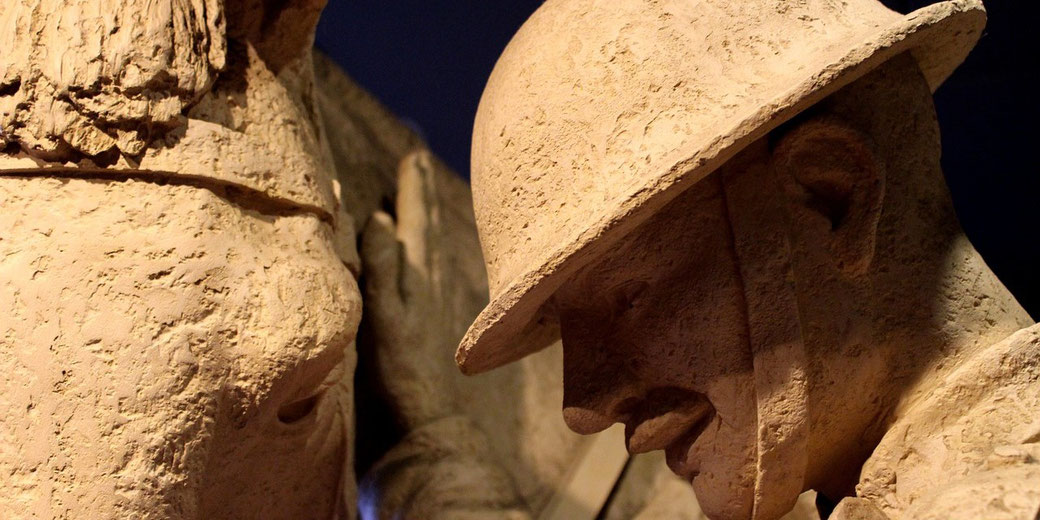
The First World War was the first conflict that occurred on a staggering scale. World War I (WWI) was unprecedented in its global impact and the extent of its industrialization.
However, the reason why the war originally began is incredibly complex. To try and explain the causes of the war, historians have tried to simplify it down to four main causes.
They create the acronym: MAIN.
Imperialism
Nationalism.
This simplified acronym is a useful way to remember the four MAIN causes of the war.
However, we will explain each of these concepts out of order below.
One of the most commonly discussed causes of WWI was the system of alliances that existed by 1914, the year the war started.
An 'alliance' is an agreement made between two countries, where each side promises to help the other if required.
Most of the time, this involves military or financial assistance. When an alliance is created, the countries involved are known as 'allies'.
By the dawn of the First World War, most European countries had entered into one or more alliances with other countries.
What made this an important cause of WWI, was that many of these alliances were military in nature: that if one country attacked or was attacked, all of their allies had promised to get involved as well.
This meant, that if just one country attacked another, most of Europe would immediately be at war, as each country jumped in to help out their friends.
Imperialism, as a concept, has been around for a very long time in human history. Imperialism is the desire to build an empire for your country.
This usually involves invading and taking land owned by someone else and adding it to your empire.
By the 19th century, many European countries had been involved in imperialism by conquering less advanced nations in Asia, the Americas or Africa.
By 1900, the British Empire was the largest imperial power in the world. It controlled parts of five different continents and owned about a quarter of all land in the world.
France was also a large empire, with control over parts of south-east Asia and Africa.
By 1910, Germany had been trying to build its own empire to rival that of Britain and France and was interested in expanding its colonial holdings.
This meant that when an opportunity for a war of conquest became available, Germany was very keen to take advantage of it.
Militarism is the belief that a country's army and navy (since air forces didn't exist at the start of WWI) were the primary means that nations resolved disagreement between each other.
As a result, countries like to boast about the power of their armed forces.
Some countries spent money improving their land armies, while others spent money on their navies.
Some countries tried to gain the advantage by having the most number of men in their armies, while others focused more on having the most advanced technology in their forces.
Regardless of how they approached it, countries used militarism as a way of gaining an edge on their opponents.
An example of this competition for a military edge can be seen in the race between Britain and Germany to have the most powerful navy.
Britain had recently developed a special ship known as a 'dreadnought’. The Germans were so impressed by this, that they increased their government spending so that they also had some dreadnoughts.
The final of the four causes is 'nationalism'. Nationalism is the idea that people should have a deep love for their country, even to the extent that they are willing to die for it.
Throughout the 19th century, most countries had developed their own form of nationalism, where they encouraged a love of the nation in their citizens through the process of creating national flags and writing national anthems.
Children at schools were taught that their country was the best in the world and that should it ever be threatened, that they should be willing to take up arms to defend it.
The growing nationalist movements created strong animosity between countries that had a history of armed conflict.
A good example of this is the deep anger that existed between Germany and France.
These two countries had a recent history of war and struggling over a small region between the two, called Alsace-Lorraine.
Germany had seized control of it after the Franco-Prussian War in 1871, which the French were deeply upset by.
As a result, France believed that they should be willing to fight and die to take it back.
Conflicts and Crises
In the two decades before WWI started in 1914, there were a number of smaller conflicts and crises that had already threatened to turn into global conflicts.
While these didn't eventually start the global war, it does show the four causes mentioned above and how they interacted in the real world.
The Moroccan Crisis
In 1904, Britain recognized France's sphere of influence over Morocco in North Africa in exchange for France recognizing Britain's sphere of influence in Egypt.
However, the Moroccans had a growing sense of nationalism and wanted their independence.
In 1905, Germany announced that they would support Morocco if they wanted to fight for their freedom.
To avoid war, a conference was held which allowed France to keep Morocco. Then, in 1911, the Germans again argued for Morocco to fight against France.
To again avoid war. Germany received territorial compensation in the French Congo in exchange for recognizing French control over Morocco.
The Bosnian Crisis
In 1908, the nation of Austria-Hungary had been administrating the Turkish regions of Bosnia and Herzegovina since 1878, but they formally annexed it in 1908, which caused the crisis.
The country of Serbia was outraged, because they felt that it should have been given to them. As a result, Serbia threatened to attack Austria-Hungary.
To support them, Russia, who was allied to Serbia, prepared its armed forces. Germany, however, who was allied to Austria-Hungary, also prepared its army and threaten to attack Russia.
Luckily, war was avoided because Russia backed down. However, there was some regional fighting during 1911 and 1912, as Turkey lost control of the region.
Despite this, Serbia and Austria-Hungary were still angry with each other as they both wanted to expand into these newly liberated countries.
Further reading
What do you need help with, download ready-to-use digital learning resources.

Copyright © History Skills 2014-2024.
Contact via email

Sign Up Today
Start your 14 day free trial today
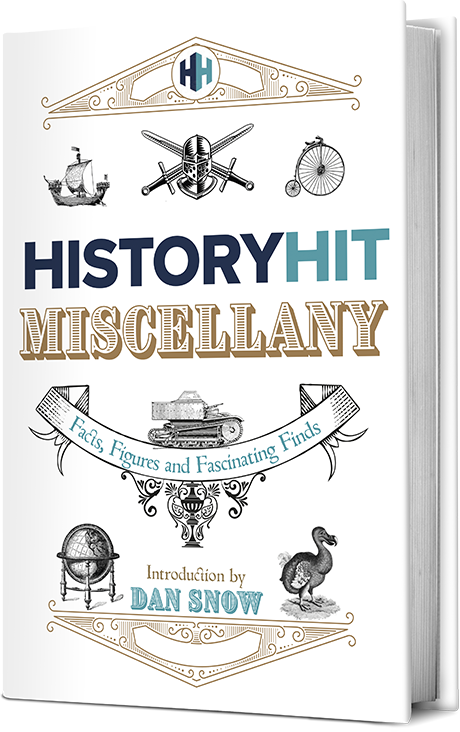
The History Hit Miscellany of Facts, Figures and Fascinating Finds
- 20th Century
The 4 M-A-I-N Causes of World War One

Alex Browne
28 sep 2021.
It’s possibly the single most pondered question in history – what caused World War One? It wasn’t, like in World War Two, a case of a single belligerent pushing others to take a military stand. It didn’t have the moral vindication of resisting a tyrant.
Rather, a delicate but toxic balance of structural forces created a dry tinder that was lit by the assassination of Archduke Franz Ferdinand in Sarajevo . That event precipitated the July Crisis, which saw the major European powers hurtle toward open conflict.
The M-A-I-N acronym – militarism, alliances, imperialism and nationalism – is often used to analyse the war, and each of these reasons are cited to be the 4 main causes of World War One. It’s simplistic but provides a useful framework.
The late nineteenth century was an era of military competition, particularly between the major European powers. The policy of building a stronger military was judged relative to neighbours, creating a culture of paranoia that heightened the search for alliances. It was fed by the cultural belief that war is good for nations.
Germany in particular looked to expand its navy. However, the ‘naval race’ was never a real contest – the British always s maintained naval superiority. But the British obsession with naval dominance was strong. Government rhetoric exaggerated military expansionism. A simple naivety in the potential scale and bloodshed of a European war prevented several governments from checking their aggression.

A web of alliances developed in Europe between 1870 and 1914 , effectively creating two camps bound by commitments to maintain sovereignty or intervene militarily – the Triple Entente and the Triple Alliance.
- The Triple Alliance of 1882 linked Germany, Austria-Hungary and Italy.
- The Triple Entente of 1907 linked France, Britain and Russia.
A historic point of conflict between Austria Hungary and Russia was over their incompatible Balkan interests, and France had a deep suspicion of Germany rooted in their defeat in the 1870 war.
The alliance system primarily came about because after 1870 Germany, under Bismarck, set a precedent by playing its neighbours’ imperial endeavours off one another, in order to maintain a balance of power within Europe

‘Hark! hark! the dogs do bark!’, satirical map of Europe. 1914
Image Credit: Paul K, CC BY 2.0 , via Wikimedia Commons
Imperialism
Imperial competition also pushed the countries towards adopting alliances. Colonies were units of exchange that could be bargained without significantly affecting the metro-pole. They also brought nations who would otherwise not interact into conflict and agreement. For example, the Russo-Japanese War (1905) over aspirations in China, helped bring the Triple Entente into being.
It has been suggested that Germany was motivated by imperial ambitions to invade Belgium and France. Certainly the expansion of the British and French empires, fired by the rise of industrialism and the pursuit of new markets, caused some resentment in Germany, and the pursuit of a short, aborted imperial policy in the late nineteenth century.
However the suggestion that Germany wanted to create a European empire in 1914 is not supported by the pre-war rhetoric and strategy.
Nationalism
Nationalism was also a new and powerful source of tension in Europe. It was tied to militarism, and clashed with the interests of the imperial powers in Europe. Nationalism created new areas of interest over which nations could compete.

For example, The Habsburg empire was tottering agglomeration of 11 different nationalities, with large slavic populations in Galicia and the Balkans whose nationalist aspirations ran counter to imperial cohesion. Nationalism in the Balkan’s also piqued Russia’s historic interest in the region.
Indeed, Serbian nationalism created the trigger cause of the conflict – the assassination of the heir to the Austro-Hungarian throne, Archduke Franz Ferdinand.
The spark: the assassination
Ferdinand and his wife were murdered in Sarajevo by Gavrilo Princip, a member of the Bosnian Serbian nationalist terrorist organization the ‘Black Hand Gang.’ Ferdinand’s death, which was interpreted as a product of official Serbian policy, created the July Crisis – a month of diplomatic and governmental miscalculations that saw a domino effect of war declarations initiated.
The historical dialogue on this issue is vast and distorted by substantial biases. Vague and undefined schemes of reckless expansion were imputed to the German leadership in the immediate aftermath of the war with the ‘war-guilt’ clause. The notion that Germany was bursting with newfound strength, proud of her abilities and eager to showcase them, was overplayed.

The first page of the edition of the ‘Domenica del Corriere’, an Italian paper, with a drawing by Achille Beltrame depicting Gavrilo Princip killing Archduke Franz Ferdinand of Austria in Sarajevo
Image Credit: Achille Beltrame, Public domain, via Wikimedia Commons
The almost laughable rationalization of British imperial power as ‘necessary’ or ‘civilizing’ didn’t translate to German imperialism, which was ‘aggressive’ and ‘expansionist.’ There is an on-going historical discussion on who if anyone was most culpable.
Blame has been directed at every single combatant at one point or another, and some have said that all the major governments considered a golden opportunity for increasing popularity at home.
The Schlieffen plan could be blamed for bringing Britain into the war, the scale of the war could be blamed on Russia as the first big country to mobilise, inherent rivalries between imperialism and capitalism could be blamed for polarising the combatants. AJP Taylor’s ‘timetable theory’ emphasises the delicate, highly complex plans involved in mobilization which prompted ostensibly aggressive military preparations.
Every point has some merit, but in the end what proved most devastating was the combination of an alliance network with the widespread, misguided belief that war is good for nations, and that the best way to fight a modern war was to attack. That the war was inevitable is questionable, but certainly the notion of glorious war, of war as a good for nation-building, was strong pre-1914. By the end of the war, it was dead.
You May Also Like
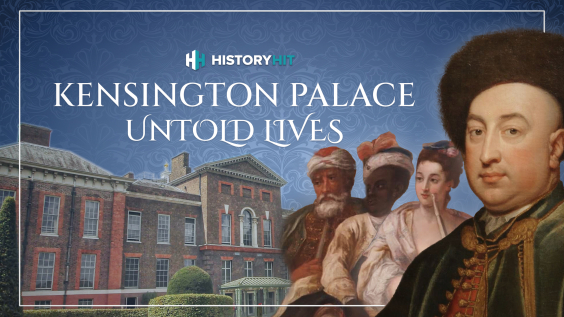
Mac and Cheese in 1736? The Stories of Kensington Palace’s Servants
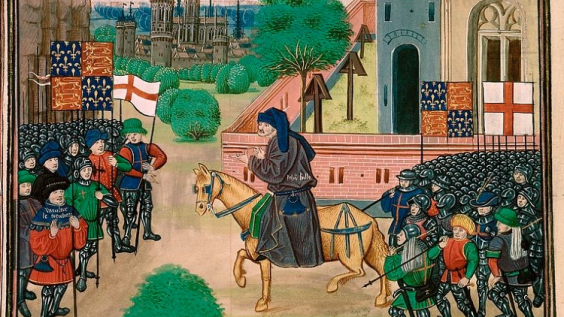
The Peasants’ Revolt: Rise of the Rebels
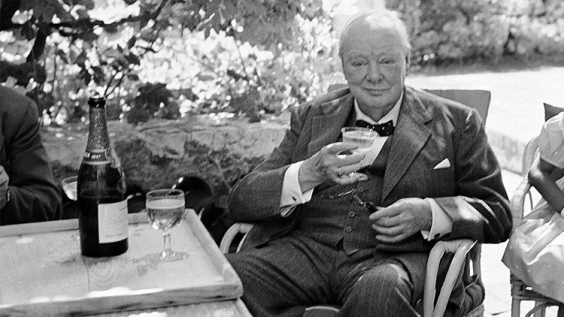
10 Myths About Winston Churchill

Medusa: What Was a Gorgon?
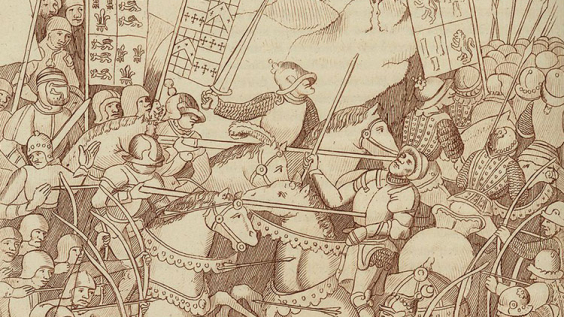
10 Facts About the Battle of Shrewsbury
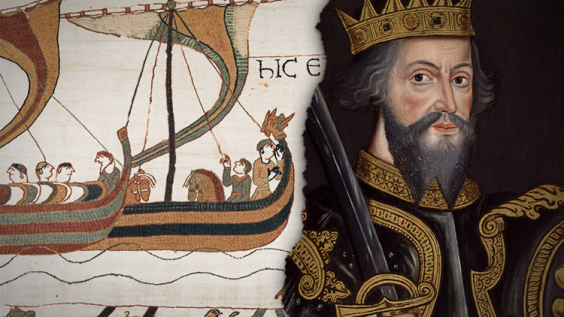
5 of Our Top Podcasts About the Norman Conquest of 1066

How Did 3 People Seemingly Escape From Alcatraz?
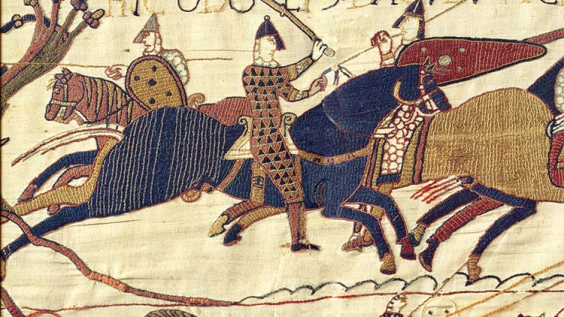
5 of Our Top Documentaries About the Norman Conquest of 1066
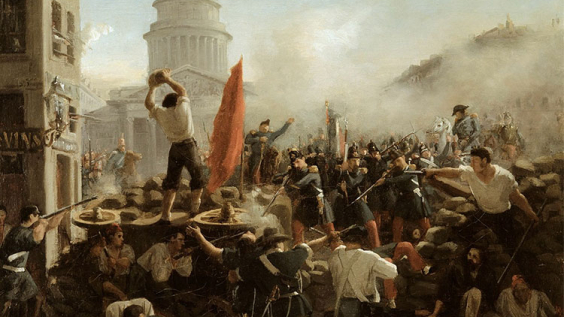
1848: The Year of Revolutions
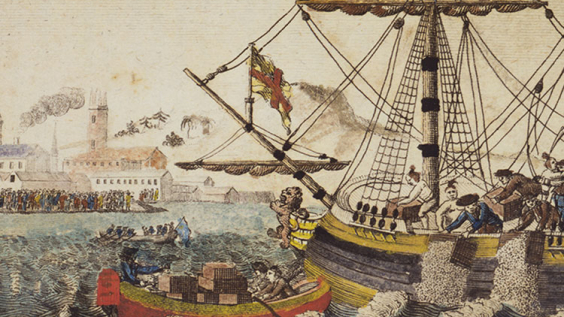
What Prompted the Boston Tea Party?
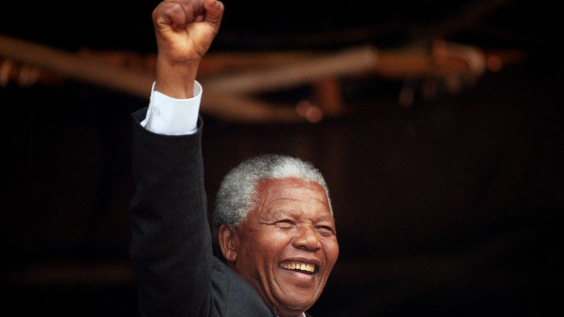
15 Quotes by Nelson Mandela

The History of Advent
5 Key Causes of World War I
Illustration by Hugo Lin. ThoughtCo.
- M.A., History, University of Florida
- B.A., History, University of Florida
World War I, known as the "war to end all wars," occurred between July 1914 and November 11, 1918. By the end of the war, over 17 million people had been killed, including over 100,000 American troops. While the causes of the war are infinitely more complicated than a simple timeline of events, and are still debated and discussed to this day, the list below provides an overview of the most frequently-cited events that led to war.
Watch Now: 5 Causes of World War I
Mutual defense alliances.
Countries throughout the world have always made mutual defense agreements with their neighbors, treaties that could pull them into battle. These treaties meant that if one country was attacked, the allied countries were bound to defend them. Before World War 1 began, the following alliances existed:
- Russia and Serbia
- Germany and Austria-Hungary
- France and Russia
- Britain and France and Belgium
- Japan and Britain
When Austria-Hungary declared war on Serbia, Russia got involved to defend Serbia. Germany, seeing that Russia was mobilizing, declared war on Russia. France was then drawn in against Germany and Austria-Hungary. Germany attacked France by marching through Belgium pulling Britain into war. Then Japan entered the war to support its British allies. Later, Italy and the United States would enter on the side of the Allies (Britain, France, Russia, etc.).
Imperialism
Imperialism is when a country increases their power and wealth by bringing additional territories under their control, usually without outright colonizing or resettling them. Before World War I, several European countries had made competing imperialistic claims in Africa and parts of Asia, making them points of contention. Because of the raw materials these areas could provide, tensions around which country had the right to exploit these areas ran high. The increasing competition and desire for greater empires led to an increase in confrontation that helped push the world into World War I.
As the world entered the 20th century, an arms race had begun, primarily over the number of each country's warships, and the increasing size of their armies—countries began training more and more of their young men to be prepared for battle. The warships themselves increased in size, number of guns, speed, method of propulsion, and quality armor, beginning in 1906 with Britain's HMS Dreadnought . Dreadnought was soon out-classed as the Royal Navy and Kaiserliche Marine quickly expanded their ranks with increasingly modern and powerful warships.
By 1914, Germany had nearly 100 warships and two million trained soldiers. Great Britain and Germany both greatly increased their navies in this time period. Further, in Germany and Russia particularly, the military establishment began to have a greater influence on public policy. This increase in militarism helped push the countries involved into war.
Nationalism
Much of the origin of the war was based on the desire of the Slavic peoples in Bosnia and Herzegovina to no longer be part of Austria-Hungary but instead be part of Serbia. This specific essentially nationalistic and ethnic revolt led directly to the assassination of Archduke Ferdinand , which was the event that tipped the scales to war.
But more generally, nationalism in many of the countries throughout Europe contributed not only to the beginning but to the extension of the war across Europe and into Asia. As each country tried to prove their dominance and power, the war became more complicated and prolonged.
Immediate Cause: Assassination of Archduke Franz Ferdinand
The immediate cause of World War I that made the aforementioned items come into play (alliances, imperialism, militarism, and nationalism) was the assassination of Archduke Franz Ferdinand of Austria-Hungary. In June 1914, a Serbian-nationalist terrorist group called the Black Hand sent groups to assassinate the Archduke. Their first attempt failed when a driver avoided a grenade thrown at their car. However, later that day a Serbian nationalist named Gavrilo Princip shot the Archduke and his wife while they were driving through Sarajevo, Bosnia which was part of Austria-Hungary. They died of their wounds.
The assassination was in protest to Austria-Hungary having control of this region: Serbia wanted to take over Bosnia and Herzegovina. The assassination of Ferdinand led to Austria-Hungary declaring war on Serbia. When Russia began to mobilize to defend its alliance with Serbia, Germany declared war on Russia. Thus began the expansion of the war to include all those involved in the mutual defense alliances.

The War to End All Wars
World War I saw a change in warfare, from the hand-to-hand style of older wars to the inclusion of weapons that used technology and removed the individual from close combat. The war had extremely high casualties over 15 million dead and 20 million injured. The face of warfare would never be the same again.
- Causes of World War I and the Rise of Germany
- The Assassination of Archduke Franz Ferdinand, 1914
- World War I Timeline From 1914 to 1919
- Biography of Franz Ferdinand, Archduke of Austria
- The Causes and War Aims of World War One
- World War I Timeline: 1914, The War Begins
- World War I Introduction and Overview
- World War 1: A Short Timeline Pre-1914
- The Major Alliances of World War I
- World War I: Opening Campaigns
- The First Battle of the Marne
- The Fourteen Points of Woodrow Wilson's Plan for Peace
- Key Historical Figures of World War I
- The Black Hand: Serbian Terrorists Spark WWI
- The Consequences of World War I
- History Classics
- Your Profile
- Find History on Facebook (Opens in a new window)
- Find History on Twitter (Opens in a new window)
- Find History on YouTube (Opens in a new window)
- Find History on Instagram (Opens in a new window)
- Find History on TikTok (Opens in a new window)
- This Day In History
- History Podcasts
- History Vault
US Entry Into World War I
By: History.com Editors
Updated: May 10, 2024 | Original: April 6, 2017

When World War I broke out across Europe in 1914, President Woodrow Wilson proclaimed the United States would remain neutral, and many Americans supported this policy of nonintervention. However, public opinion about neutrality started to change after the sinking of the British ocean liner Lusitania by a German U-boat in 1915; almost 2,000 people perished, including 128 Americans. Along with news of the Zimmermann telegram threatening an alliance between Germany and Mexico against America, Wilson asked Congress for a declaration of war against Germany. The United States officially entered the conflict on April 6, 1917.
World War I Begins
On June 28, 1914, Archduke Franz Ferdinand , heir to the throne of the Austro-Hungarian Empire, and his wife Sophie were assassinated by a Bosnian Serb nationalist in Sarajevo, the capital of the Austro-Hungarian province of Bosnia and Herzegovina.
One month later, on July 28, Austria-Hungary declared war on Serbia . Within a week, Russia, France, Belgium, Great Britain and Serbia had sided against Austria-Hungary and Germany, and the Great War, as it was originally called, was underway.

The Great War
Two-Night Event, The Great War Begins Monday, May 27 at 8/7c and streams the next day
Central Powers
Germany and Austria-Hungary later teamed with the Ottoman Empire and Bulgaria and were referred to collectively as the Central Powers. Russia, France and Great Britain, the major Allied Powers, eventually were joined by Italy, Japan and Portugal, among other nations.
On August 4, as World War I erupted across Europe, President Woodrow Wilson proclaimed America’s neutrality, stating the nation “must be neutral in fact as well as in name during these days that are to try men’s souls.”
With no vital interests at stake, many Americans supported this position. Additionally, America was home to a number of immigrants from countries at war with each other and Wilson wanted to avoid this becoming a divisive issue.
American companies, however, continue to ship food, raw materials and munitions to both the Allies and Central Powers, although trade between the Central Powers and the United States was severely curtailed by Britain’s naval blockade of Germany. U.S. banks also provided the warring nations with loans, the bulk of which went to the Allies.
Lusitania Sinks
On May 7, 1915, a German submarine sank the British ocean liner Lusitania , resulting in the deaths of nearly 1,200 people, including 128 Americans. The incident strained diplomatic relations between Washington and Berlin and helped turn public opinion against Germany.
President Wilson demanded that the Germans stop unannounced submarine warfare; however, he didn’t believe the United States should take military action against Germany.
Some Americans disagreed with this nonintervention policy, including former president Theodore Roosevelt , who criticized Wilson and advocated going to war. Roosevelt promoted the Preparedness Movement, whose aim was to persuade the nation it must get ready for war.
'America First'
In 1916, as American troops were deployed to Mexico to hunt down Mexican rebel leader Pancho Villa following his raid on Columbus, New Mexico , concerns about the readiness of the U.S. military grew. In response, Wilson signed the National Defense Act in June of that year, expanding the Army and the National Guard, and in August, the president signed legislation designed to significantly strengthen the Navy.
After campaigning on the slogans “He Kept Us Out of War” and “America First,” Wilson was elected to a second term in the White House in November 1916.
Meanwhile, some Americans joined the fighting in Europe their own. Starting in the early months of the war, a group of U.S. citizens enlisted in the French Foreign Legion. (Among them was the poet Alan Seeger, whose poem “I Have a Rendezvous with Death” later was a favorite of President John F. Kennedy . Seeger was killed in the war in 1916.) Other Americans volunteered with the Lafayette Escadrille, a unit of the French Air Service, or drove ambulances for the American Field Service.
Submarine Warfare Resumes
In March 1916, a German U-boat torpedoed a French passenger ship, Sussex , killing dozens of people, including several Americans. Afterward, the United States threatened to cut diplomatic ties with Germany.
In response, the Germans issued the Sussex pledge, promising to stop attacking merchant and passenger ships without warning. However, on January 31, 1917, the Germans reversed course, announcing they would resume unrestricted submarine warfare, reasoning it would help them win the war before America, which was relatively unprepared for battle, could join the fighting on behalf of the Allies.
In response, America severed diplomatic ties with Germany on February 3. During February and March, German U-boats sank a series of U.S. merchant ships, resulting in multiple casualties.
Zimmermann Telegram
Meanwhile, in January 1917, the British intercepted and deciphered an encrypted message from German Foreign Minister Arthur Zimmermann to the German minister in Mexico, Heinrich von Eckhart.
The so-called Zimmermann telegram proposed an alliance between Germany and Mexico—America’s southern neighbor—if America joined the war on the side of the Allies.
As part of the arrangement, the Germans would support the Mexicans in regaining the territory they’d lost in the Mexican-American War— Texas , New Mexico and Arizona . Additionally, Germany wanted Mexico to help convince Japan to come over to its side in the conflict.
The British gave President Wilson the Zimmermann telegram on February 24, and on March 1 the American press reported on its existence. The American public was outraged by the news of the Zimmermann telegram and it, along with Germany’s resumption of submarine attacks, helped lead to the United States joining the war.
America Declares War on Germany
On April 2, 1917, Wilson went before a special joint session of Congress and asked for a declaration of war against Germany, stating: “The world must be made safe for democracy.”
On April 4, the Senate voted 82 to 6 to declare war. Two days later, on April 6, the House of Representatives voted 373 to 50 in favor of adopting a war resolution against Germany.
Among the dissenters was Rep. Jeannette Rankin of Montana , the first woman in Congress. It was only the fourth time Congress had declared war; the others were the War of 1812 , the Mexican-American War and the Spanish-American War of 1898.
In early 1917, the U.S. Army had just 133,000 members. That May, Congress passed the Selective Service Act , which reinstated the draft for the first time since the Civil War and led to some 2.8 million men being inducted into the U.S. military by the end of the Great War. Around 2 million more Americans voluntarily served in the armed forces during the conflict.
The first U.S. infantry troops arrived on the European continent in June 1917; in October, the first American soldiers entered combat in France. That December, America declared war against Austria-Hungary (America never was formally at war with the Ottoman Empire or Bulgaria).
When the war concluded in November 1918, with a victory for the Allies, more than 2 million U.S. troops had served at the Western Front in Europe, and more than 50,000 of them died.

HISTORY Vault: World War I Documentaries
Stream World War I videos commercial-free in HISTORY Vault.
U.S. Entry into World War I, 1917. U.S. Department of State, Office of the Historian . Why did the US enter World War I? The University of Rochester Newscenter . U.S. Participation in the Great War (World War I). Library of Congress .

Sign up for Inside History
Get HISTORY’s most fascinating stories delivered to your inbox three times a week.
By submitting your information, you agree to receive emails from HISTORY and A+E Networks. You can opt out at any time. You must be 16 years or older and a resident of the United States.
More details : Privacy Notice | Terms of Use | Contact Us
Home — Essay Samples — Sociology — Connection — Unveiling the Causes and Consequences of World War I
Unveiling The Causes and Consequences of World War I
- Categories: Connection Contract Monarchy
About this sample

Words: 557 |
Published: Mar 1, 2019
Words: 557 | Page: 1 | 3 min read

Cite this Essay
Let us write you an essay from scratch
- 450+ experts on 30 subjects ready to help
- Custom essay delivered in as few as 3 hours
Get high-quality help

Verified writer
- Expert in: Sociology Law, Crime & Punishment Government & Politics

+ 120 experts online
By clicking “Check Writers’ Offers”, you agree to our terms of service and privacy policy . We’ll occasionally send you promo and account related email
No need to pay just yet!
Related Essays
2 pages / 954 words
2 pages / 789 words
3 pages / 1261 words
1 pages / 319 words
Remember! This is just a sample.
You can get your custom paper by one of our expert writers.
121 writers online
Still can’t find what you need?
Browse our vast selection of original essay samples, each expertly formatted and styled
Related Essays on Connection
Qualities of strong relationships are the foundation upon which enduring connections are built. This essay delves into the essential characteristics that contribute to the strength and resilience of relationships. By exploring [...]
Effective communication is a fundamental aspect of human interaction, serving as the foundation for building strong relationships, resolving conflicts, and achieving shared goals. It encompasses a wide range of skills and [...]
In Cynthia Rylant's novella, "Stray," readers are taken on a journey that explores themes of loss, redemption, and the power of human connection. Through the story of Doris, a middle-aged woman who finds solace in adopting a [...]
Remember by Joy Harjo is a powerful and thought-provoking poem that explores themes of identity, memory, and connection to the natural world. Through the use of vivid imagery, symbolism, and a unique narrative structure, Harjo [...]
Love can hold us captive, chain us down and make us slaves to its cruel ways, blinding us from all judgement. The human condition of love can be expressed as a strong affection for another arising out of kinship, enthusiasm, or [...]
In the ever-evolving tapestry of human existence, two contrasting outlooks often guide our perceptions and actions: realism and optimism. Realism encourages us to confront life's challenges with a clear-eyed view of the world, [...]
Related Topics
By clicking “Send”, you agree to our Terms of service and Privacy statement . We will occasionally send you account related emails.
Where do you want us to send this sample?
By clicking “Continue”, you agree to our terms of service and privacy policy.
Be careful. This essay is not unique
This essay was donated by a student and is likely to have been used and submitted before
Download this Sample
Free samples may contain mistakes and not unique parts
Sorry, we could not paraphrase this essay. Our professional writers can rewrite it and get you a unique paper.
Please check your inbox.
We can write you a custom essay that will follow your exact instructions and meet the deadlines. Let's fix your grades together!
Get Your Personalized Essay in 3 Hours or Less!
We use cookies to personalyze your web-site experience. By continuing we’ll assume you board with our cookie policy .
- Instructions Followed To The Letter
- Deadlines Met At Every Stage
- Unique And Plagiarism Free

World War One Essay

Germany was responsible for World War One. To what extent do you agree with this statement?
Essay by Laura Iafur, 3rd Form
Taking place on 28th July 1914 until 11th November 1918, World War One was one of the deadliest conflicts in history, ending the lives of millions of people. Although no one country deserves more blame than the other countries, many would argue that the country of Serbia, after all, it was a group of Serbian terrorists who killed the hero of the Austrian-Hungarian empire, Franz Ferdinand. This is considered by many, what triggered this war. Others suggest Austria-Hungarian is to blame the most, they wanted war with Serbia even before Franz Ferdinand’s assassination, it seems like the assassination was the opportunity they were waiting for. Some could even say that it was Russia, who was the first to mobilize its troops, creating even more tension in an already unstable Europe. These countries are all guilty for such a violent war, but Germany, being the one that has the blank cheque to Austria-Hungary, is the most responsible of all; without backing up Austria-Hungary, it is improbable that Austria-Hungary would have acted so recklessly.
On 5th July 1914, Germany gave the “blank cheque” of unconditional support to the Austrian-Hungarian Empire, fully aware of the consequences it was probably going to bring. At that moment, Germany had the strongest army, with 2,200,000 soldiers and warships, this guaranteed Austria-Hungary that no matter how drastically they acted, they would receive massive support from Germany. If Germany had not given this back up to Austria-Hungary, they most likely would have done something other than declaring war. Germany knew that Russia would most likely help Serbia, which meant that a local war would escalate into a Global war, but they did it anyway.
Germany also dragged Britain into the war when using the Schlieffen plan. On 2nd August, Germany asked for permission for their army to pass through Belgium, to get to France, but they were refused. Sir Edward Grey proposed to Germany that Britain would stay if Germany did not attack France, but the German generals denied this. On 3rd August, Germany violated international treaties by invading Belgium, a neutral country; knowing that Britain was obligated to help Belgium if an invasion occurred. Therefore, Britain declared war on Germany on 4th August 1914.
The enormous increase in tension between these countries was one of the main reasons for this war to start, there are various factors that led to more tension, many in which Germany was involved. One of these factors was the German and British naval race which did not make Britain happy. (“Britannia rules the waves”), and at the end of 1914, Britain was this race.
The Moroccan crisis, 1906, was another factor. The French wanted to conquer Morocco and Britain agreed to help, but in 1905 Kaiser Wilhelm visited Morocco and promised to protect it against anyone who threatened it. The French and British were furious. Germany had to promise to stay out of Morocco, which didn’t make them happy at all. In 1911, there was a revolution in Morocco, the French sent in an army to control it. Kaiser Wilhelm sent a gunboat to the Moroccan part of Agadir; this angered the French and British. Germany was forced to back down, which made them very angry, it increased their resentment. Kaiser Wilhelm was determined to win the next crisis. All this evidence shows that Germany, at that point was ashamed. They had lost various crisis issues and since they could not allow themselves another defeat. Germany had decided they needed to prove their power, this being the reason they acted in such a careless manner.
Austria-Hungary also deserves part of the blame; they were the ones who declared war first on Serbia on 28th July, 1914. Before 1914, assassinations of royal figures did not usually result in war. However, Austria-Hungary saw the Sarajevo assassination of Archduke Franz Ferdinand and his wife as an opportunity to conquer and destroy Serbia. The Austrian Chief of Staff General Hotzendoz wanted to attack Serbia long before the assassination.
Austria-Hungary sent an ultimatum to Serbia (23rd July) with ten very exigent requests that needed to be accepted to avoid military conflict. Serbia accepted all requests apart from one, which was to allow Austria-Hungary to enter Serbia and oversee investigation and prosecution on the assassination of Franz Ferdinand. Nonetheless, this was not enough for Austria-Hungary, so they declared war, and with Germany’s support, it would’ve provided an easy win.
On the other hand, if Austria-Hungary did not make a move against Serbia, the different nationalities living in the Austria-Hungarian territory could act against their leaders giving the impression to other countries that there won’t have been any consequences. Austria-Hungary could have acted in a different manner on the Serbia war, but it was due to Germany who empowered them to act this way.
The assassination of Franz Ferdinand was conducted by a Serbian terrorist named Gavrilo Princip in Sarajevo, Bosnia, 28th June 1914. This was the spark that caused the war. Gavrilo was a nationalist who wanted Bosnia to be its own country, and when Ferdinand announced his trip to SaraJevo, it was the perfect opportunity to strike against Austria-Hungary. Gavrilo was a member of a terrorist group named, Black Hand. Austria-Hungary suspected the involvement of Serbia in the Bosnian attack, thus representing the final act in a long-standing rivalry between Austria-Hungary and Serbia. Russia did not want a war, the Russian Grand Council decided if Serbia was to be invaded, it would have to request a conference to asses the issue. However, Russia had previous issues with Serbia regarding the Bosnian crisis in 1908.
To conclude, World War One was a chain reaction triggered by the assassination Franz Ferdinand; however, Serbia wasn’t mostly responsible but Germany, who pushed Austria-Hungary in making those decisions leading to the global conflict. The alliance system was created to prevent war, but it did the total opposite, where all the countries were forced to join the war.
House Magazine Archive
- Divisions and Offices
- Grants Search
- Manage Your Award
- NEH's Application Review Process
- Professional Development
- Grantee Communications Toolkit
- NEH Virtual Grant Workshops
- Awards & Honors
- American Tapestry
- Humanities Magazine
- NEH Resources for Native Communities
- Search Our Work
- Office of Communications
- Office of Congressional Affairs
- Office of Data and Evaluation
- Budget / Performance
- Contact NEH
- Equal Employment Opportunity
- Human Resources
- Information Quality
- National Council on the Humanities
- Office of the Inspector General
- Privacy Program
- State and Jurisdictional Humanities Councils
- Office of the Chair
- NEH-DOI Federal Indian Boarding School Initiative Partnership
- NEH Equity Action Plan
- GovDelivery
World War I Changed America and Transformed Its Role in International Relations
So why don't we pay more attention to it.
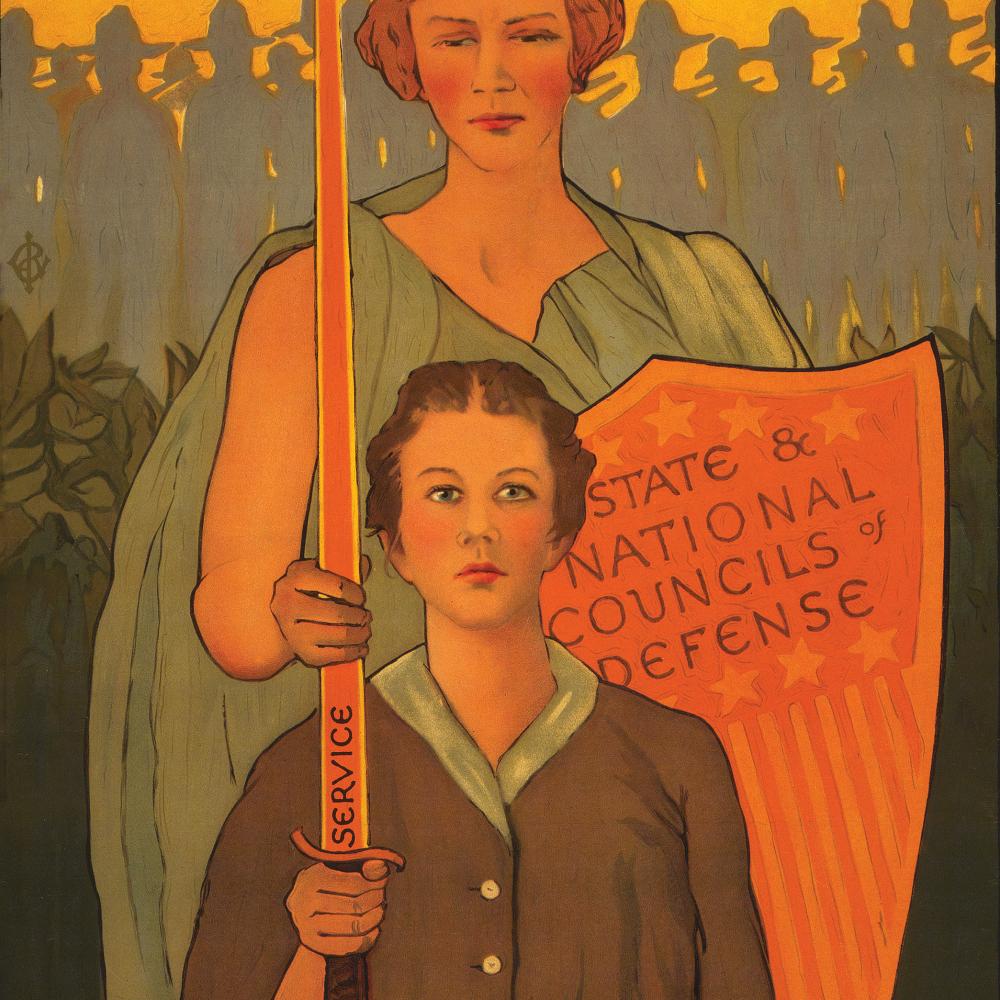
—Library of Congress
The entry of the United States into World War I changed the course of the war, and the war, in turn, changed America. Yet World War I receives short shrift in the American consciousness.
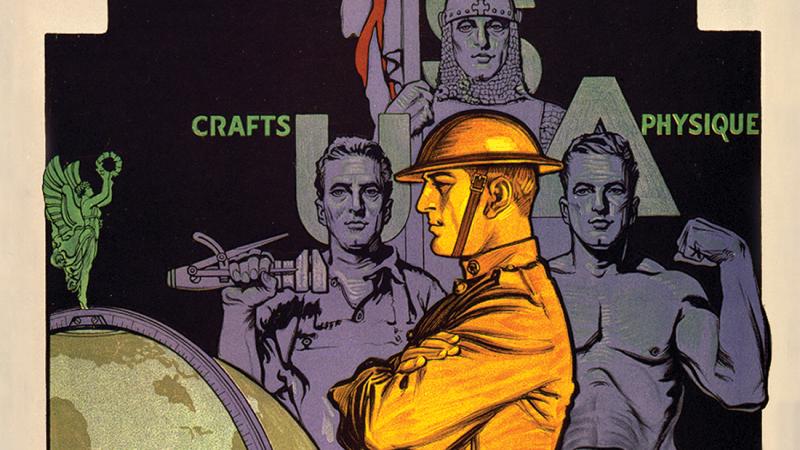
Recruiting poster for the U.S. Army by Herbert Paus.
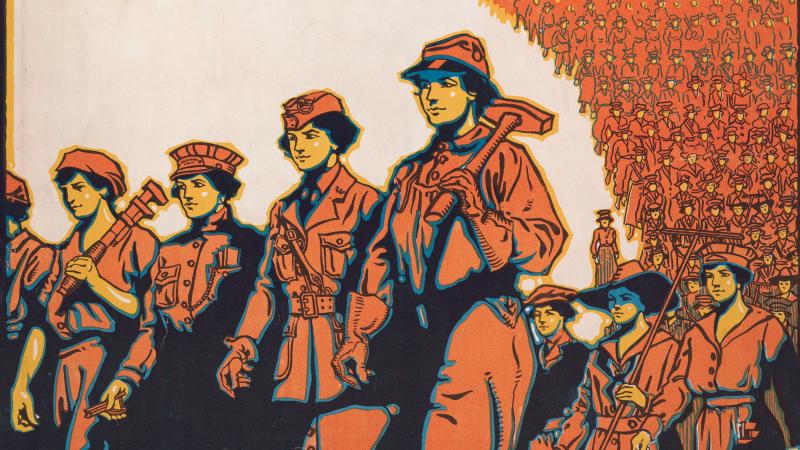
Detail of a recruiting poster for YWCA by Ernest Hamlin Baker.
The American Expeditionary Forces arrived in Europe in 1917 and helped turn the tide in favor of Britain and France, leading to an Allied victory over Germany and Austria in November 1918. By the time of the armistice, more than four million Americans had served in the armed forces and 116,708 had lost their lives. The war shaped the writings of Ernest Hemingway and John Dos Passos. It helped forge the military careers of Dwight D. Eisenhower, George S. Patton, and George C. Marshall. On the home front, millions of women went to work, replacing the men who had shipped off to war, while others knitted socks and made bandages. For African-American soldiers, the war opened up a world not bound by America’s formal and informal racial codes.
And we are still grappling with one of the major legacies of World War I: the debate over America’s role in the world. For three years, the United States walked the tightrope of neutrality as President Woodrow Wilson opted to keep the country out of the bloodbath consuming Europe. Even as Germany’s campaign of unrestricted submarine warfare in the Atlantic put American sailors and ships in jeopardy, the United States remained aloof. But after the Zimmermann telegram revealed Germany’s plans to recruit Mexico to attack the United States if it did not remain neutral, Americans were ready to fight.
In April 1917, President Wilson stood before Congress and said, “The world must be made safe for democracy.” With those words, he asked for a declaration of war, which Congress gave with gusto. For the first time in its history, the United States joined a coalition to fight a war not on its own soil or of its own making, setting a precedent that would be invoked repeatedly over the next century.
“For most Americans, going to war in 1917 was about removing the German threat to the U.S. homeland,” says Michael S. Neiberg, professor of history at the U.S. Army War College. “But after the war, Wilson developed a much more expansive vision to redeem the sin of war through the founding of a new world order, which created controversy and bitterness in the United States.”
The burden of sending men off to die weighed on Wilson’s conscience. It was one reason why he proposed the creation of the League of Nations, an international body based on collective security. But joining the League required the United States to sacrifice a measure of sovereignty. When judged against the butcher’s bill of this war, Wilson thought it was a small price to pay. Others, like Wilson’s longtime nemesis Senator Henry Cabot Lodge, believed that the United States should be free to pursue its own interests and not be beholden to an international body. America hadn’t fought a war only to relinquish its newfound stature as a military power.
As soldiers returned home and the victory parades faded, the fight over the League of Nations turned bitter. The sense of accomplishment quickly evaporated. “Then came the Depression (a direct result of the war) and another global crisis,” says Neiberg. “All of that made memory of World War I a difficult thing for Americans to engage with after about 1930.”
Even as the world has changed, the positions staked out by Wilson and Lodge have not evolved much over the past one hundred years. When new storm clouds gathered in Europe during the 1930s, Lodge’s argument was repurposed by isolationists as “America First,” a phrase that has come back into vogue as yet another example of the war’s enduring influence. “The war touched everything around the globe. Our entire world was shaped by it, even if we do not always make the connections,” Neiberg says.
Historian and writer A. Scott Berg emphatically agrees. “I think World War I is the most underrecognized significant event of the last several centuries. The stories from this global drama—and its larger-than-life characters—are truly the stuff of Greek tragedy and are of Biblical proportion; and modern America’s very identity was forged during this war.”
A biographer of Wilson and Charles Lindbergh, Berg has now cast his eye as an editor across the rich corpus of contemporaneous writing to produce World War I and America , a nearly one-thousand-page book of letters, speeches, diary entries, newspaper reports, and personal accounts. This new volume from Library of America starts with the New York Times story of the assassination of Franz Ferdinand in July 1914 and concludes with an excerpt from John Dos Passos’s novel 1919 . In between, the voices of soldiers, politicians, nurses, diplomats, journalists, suffragettes, and intellectuals ask questions that are still with us.
“What is America’s role in the world? Are our claims to moral leadership abroad undercut by racial injustice at home? What do we owe those who serve in our wars?” asks Max Rudin, Library of America’s publisher. With 2017 marking the one-hundredth anniversary of America's entry into the war, the moment seemed ripe to revisit a conflict whose ghosts still haunt the nation. “It offered an opportunity to raise awareness about a generation of American writers that cries out to be better known,” says Rudin.
The volume shows off familiar names in surprising places. Nellie Bly and Edith Wharton report from the front lines. Henry Morgenthau Sr., the ambassador to the Ottoman Empire, files increasingly terrifying reports on the Armenian genocide. As Teddy Roosevelt leads the fight for American intervention, Jane Addams and Emma Goldman question the aims of the war. Writing from Italy, Ernest Hemingway complains to his family about being wounded. While Wilson and Lodge fight over American sovereignty, Ezra Pound expresses his disillusionment and grief in verse.
We also meet Floyd Gibbons, a Chicago Tribune crime reporter. Before the war he covered plenty of shootings, but “I could never learn from the victims what the precise feeling was as the piece of lead struck.” He found out in June 1918 at Belleau Wood when a German bullet found him—“the lighted end of a cigarette touched me in the fleshy part of my upper left arm.” A second bullet also found his shoulder, spawning a large burning sensation. “And then the third one struck me. . . . It sounded to me like some one had dropped a glass bottle into a porcelain bathtub. A barrel of whitewash tipped over and it seemed that everything in the world turned white.” The third bullet had found his left eye.
Stepping into an operating theater with Mary Borden, the Chicago heiress who established hospitals in France and Belgium, the smell of blood and death almost leaps off the page. “We send our men up the broken road between bushes of barbed wire and they come back to us, one by one, two by two in ambulances, lying on stretchers. They lie on their backs on the stretchers and are pulled out of the ambulances as loaves of bread are pulled out of the oven.” As a wounded soldier is laid out, “we conspire against his right to die. We experiment with his bones, his muscles, his sinews, his blood. We dig into the yawning mouths of his wounds. Helpless openings, they let us into the secret places of his body.”
When the American Expeditionary Forces shipped off to Europe, so too did approximately 16,500 women. They worked as clerks, telephone operators, and nurses; they also ran canteens that served meals to soldiers and offered a respite from battle. “These women often had complex motivations, such as a desire for adventure or professional advancement, and often witnessed more carnage than male soldiers, creating unacknowledged problems with PTSD when they returned home,” says Jennifer Keene, professor of history at Chapman University.
Of course, most women experienced the war stateside, where they tended victory gardens and worked to produce healthy meals from meager rations. They volunteered for the Red Cross and participated in Liberty Loan drives. As Willa Cather learned when she decamped from New York to Red Cloud, Nebraska, in the summer of 1918, the war could be consuming. “In New York the war was one of many subjects people talked about; but in Omaha, Lincoln, in my own town, and the other towns along the Republican Valley, and over in the north of Kansas, there was nothing but the war.”
In the Library of America volume, W. E. B. Du Bois, who, in the wake of Booker T. Washington’s death, assumed the mantle of spokesman for the black community, provides another take. From the beginning, Du Bois saw the war as grounded in the colonial rivalries and aspirations of the European belligerents.
Chad Williams, associate professor of African and Afro-American Studies at Brandeis University, says Du Bois was ahead of his time. “His writings also vividly illuminated the tensions between the professed democratic aims of the Allies—and the United States in particular—and the harsh realities of white supremacy, domestically and globally, for black people. Du Bois hoped that by supporting the American war effort and encouraging African-American patriotism, this tension could be reconciled. He was ultimately—and tragically—wrong.”
Along with Du Bois’s commentary, there are reports on the race riots in East St. Louis and Houston in 1917. Such incidents prompted James Weldon Johnson to cast aside sentimentality and answer the question, “Why should a Negro fight?”
“America is the American Negro’s country,” he wrote. “He has been here three hundred years; that is, about two hundred years longer than most of the white people.”
The U.S. Army shunted African-American soldiers into segregated units and issued them shovels more often than rifles. Some, however, fought alongside the French as equals, prompting questions about their treatment by their own country. African-American soldiers came home as citizens of the world with questions about their place in American society. “Understanding how the war impacted black people and the importance of this legacy is endlessly fascinating and, given our current times, extremely relevant,” says Williams.
To accompany its World War I volume, Library of America has launched a nationwide program, featuring scholars, to foster discussion about the war and its legacy. One hundred twenty organizations, from libraries to historical societies, are hosting events that involve veterans, their families, and their communities.
“There are veterans of recent conflicts in every community in America for whom the experiences and issues raised by World War I are very immediate,” says Rudin. “We all have something to learn from that.”
“Every war is distinct, and yet every war has almost eerie commonalities with wars past,” says Phil Klay, author of Redeployment , a collection of short stories about his service in Iraq that won the National Book Award. “I don’t think veterans have a unique authority in these discussions, but our personal experiences do inevitably infuse our reading. In my case, I find myself relentlessly drawn to pull lessons for the future from these readings, as the moral stakes of war have a visceral feel for me.”
For community programs, Library of America developed a slimmer version of its volume, World War I and America, while adding introductory essays and discussion questions. Keene, Neiberg, and Williams, along with Edward Lengel, served as editors. “There is truly not one part of the nation that was untouched by the war,” says Williams. “This project has the potential to remind people of its far-reaching significance and perhaps uncover new stories about the American experience in the war that we have not yet heard.”
Berg echoes the sentiment. “I hope audiences will appreciate the presence of World War I in our lives today—whether it is our economy, race relations, women’s rights, xenophobia, free speech, or the foundation of American foreign policy for the last one hundred years: They all have their roots in World War I.”
Meredith Hindley is a senior writer for Humanities .
Funding information
Library of America received $500,000 from NEH for nationwide library programs, a traveling exhibition, a website, and a publication of an anthology exploring how World War I reshaped American lives. For more information about the project, visit ww1america.org

SUBSCRIBE FOR HUMANITIES MAGAZINE PRINT EDITION Browse all issues Sign up for HUMANITIES Magazine newsletter
- Election 2024
- Entertainment
- Newsletters
- Photography
- Personal Finance
- AP Investigations
- AP Buyline Personal Finance
- AP Buyline Shopping
- Press Releases
- Israel-Hamas War
- Russia-Ukraine War
- Global elections
- Asia Pacific
- Latin America
- Middle East
- Election Results
- Delegate Tracker
- AP & Elections
- Auto Racing
- 2024 Paris Olympic Games
- Movie reviews
- Book reviews
- Personal finance
- Financial Markets
- Business Highlights
- Financial wellness
- Artificial Intelligence
- Social Media
TikTok sues US to block law that could ban the social media platform
TikTok and its Chinese parent company filed a lawsuit Tuesday challenging a new American law that would ban the popular video-sharing app in the U.S. unless it’s sold to an approved buyer, saying it unfairly singles out the platform and is an unprecedented attack on free speech.
FILE - The TikTok logo is displayed on a mobile phone in front of a computer screen, Oct. 14, 2022, in Boston. On Tuesday, May 7, 2024, TikTok and its Chinese parent company ByteDance filed suit against the U.S. federal government to challenge a law that would force the sale of ByteDance’s stake or face a ban, saying that the law is unconstitutional. (AP Photo/Michael Dwyer, File)
- Copy Link copied
FILE - A TikTok sign is displayed on their building in Culver City, Calif., March 11, 2024. If it feels like TikTok has been around forever, that’s probably because it has, at least if you’re measuring via internet time. What’s now in question is whether it will be around much longer — and if so, in what form. (AP Photo/Damian Dovarganes, File)
In its lawsuit, ByteDance says the new law vaguely paints its ownership of TikTok as a national security threat in order to circumvent the First Amendment, despite no evidence that the company poses a threat. It also says the law is so “obviously unconstitutional” that its sponsors are instead portraying it as a way to regulate TikTok’s ownership.
“For the first time in history, Congress has enacted a law that subjects a single, named speech platform to a permanent, nationwide ban, and bars every American from participating in a unique online community with more than 1 billion people worldwide,” ByteDance asserts in the lawsuit filed in a Washington appeals court.
The law, which President Joe Biden signed as part of a larger foreign aid package, marks the first time the U.S. has singled out a social media company for a potential ban, which free speech advocates say is what would be expected from repressive regimes such as those in Iran and China.
The lawsuit is the latest turn in what’s shaping up to be a protracted legal fight over TikTok’s future in the United States — and one that could end up before the Supreme Court. If TikTok loses, it says it would be forced to shut down next year.
The law requires ByteDance to sell the platform to a U.S.-approved buyer within nine months. If a sale is already in progress, the company would get another three months to complete the deal. ByteDance has said it doesn’t plan to sell TikTok. But even if it wanted to divest, the company would need Beijing’s blessing . According to the lawsuit, the Chinese government has “made clear” that it wouldn’t allow ByteDance to include the algorithm that populates users’ feeds and has been the “key to the success of TikTok in the United States.”
TikTok and ByteDance say the new law leaves them with no choice but to shut down by next Jan. 19 because continuing to operate in the U.S. wouldn’t be commercially, technologically or legally possible. They also say it would be impossible for ByteDance to divest its U.S. TikTok platform as a separate entity from the rest of TikTok, which has 1 billion users worldwide — most of them outside of the United States. A U.S.-only TikTok would operate as an island that’s detached from the rest of the world, the lawsuit argues.
The suit also paints divestment as a technological impossibility, since the law requires all of TikTok’s millions of lines of software code to be wrested from ByteDance so that there would be no “operational relationship” between the Chinese company and the new U.S. app.
The companies argue that they should be protected by the First Amendment’s guarantee of freedom of expression and are seeking a declaratory judgment that it is unconstitutional.
The Justice Department declined to comment on the suit Tuesday. And White House press secretary Karine Jean-Pierre declined to engage on questions about why the president continues to use TikTok for his political activities, deferring to the campaign.
Rep. Raja Krishnamoorthi, an Illinois Democrat who is the ranking member of the House Select Committee on the Chinese Communist Party, issued a statement Tuesday defending the new law.
“This is the only way to address the national security threat posed by ByteDance’s ownership of apps like TikTok. Instead of continuing its deceptive tactics, it’s time for ByteDance to start the divestment process,” he said.
ByteDance will first likely ask a court to temporarily block the federal law from taking effect, said Gus Hurwitz, a senior fellow at the University of Pennsylvania’s Carey Law School who isn’t involved in the case. And the decision whether to grant such a preliminary injunction could decide the case, because its absence, ByteDance would need to sell TikTok before the broader case could be decided, he said.
Whether a court will grant such an injunction remains unclear to Hurwitz, largely because it requires balancing important free speech issues against the Biden administration’s claims of harm to national security. “I think the courts will be very deferential to Congress on these issues,” he said.
The fight over TikTok comes amid a broader U.S.-China rivalry, especially in areas such as advanced technologies and data security that are seen as essential to each country’s economic prowess and national security.
U.S. lawmakers from both parties, as well as administration and law enforcement officials, have expressed concerns that Chinese authorities could force ByteDance to hand over U.S. user data or sway public opinion by manipulating the algorithm that populates users’ feeds. Some have also pointed to a Rutgers University study that maintains TikTok content was being amplified or underrepresented based on how it aligns with the Chinese government’s interests — a claim the company disputes.
Opponents of the law argue that Chinese authorities — or any nefarious parties — could easily get information on Americans in other ways, including through commercial data brokers that rent or sell personal information. They say the U.S. government hasn’t provided public evidence that shows TikTok has shared U.S. user information with Chinese authorities or tinkered with its algorithm for China’s benefit.
“Data collection by apps has real consequences for all of our privacy,” said Patrick Toomey, deputy director of the ACLU’s National Security Project. “But banning one social media platform used by millions of people around the world is not the solution. Instead, we need Congress to pass laws that protect our privacy in the first place.”
Jameel Jaffer, executive director of the Knight First Amendment Institute at Columbia University, expects TikTok’s lawsuit to succeed.
“The First Amendment means the government can’t restrict Americans’ access to ideas, information, or media from abroad without a very good reason for it — and no such reason exists here,” Jaffer said in a statement.
Although TikTok prevailed in earlier First Amendment challenges, it isn’t clear whether the current lawsuit will be as simple.
“The bipartisan nature of this federal law may make judges more likely to defer to a Congressional determination that the company poses a national security risk,” said Gautam Hans, a law professor and associate director of the First Amendment Clinic at Cornell University. “Without public discussion of what exactly the risks are, however, it’s difficult to determine why the courts should validate such an unprecedented law.”
Associated Press writers David Hamilton and Seung Min Kim contributed to this report.
- Share full article
Advertisement
Supported by
Guest Essay
How Iran and Israel Are Unnatural Adversaries

By Karim Sadjadpour
Mr. Sadjadpour is a senior fellow at the Carnegie Endowment for International Peace.
“History is littered,” the British writer and politician Enoch Powell said, “with the wars which everybody knew would never happen.”
A full-blown conflict between the Islamic Republic of Iran and Israel once seemed implausible. But last month, the long-running shadow war between the two nations burst into the open in a series of unprecedented drone and missile strikes, raising the specter of a fight that would contain enough advanced technology, paramilitary forces and mutual acrimony to incinerate large parts of the Middle East, collapse the global economy and entangle the United States and other major powers.
Now the two sides appear to have hit pause, but for how long? As long as Iran is ruled by an Islamist government that puts its revolutionary ideology before the national interest, the two countries will never know peace, and the Middle East will never know meaningful stability.
Iran and Israel are not natural adversaries. In contrast to other modern conflicts — between Israel and Palestine, Russia and Ukraine, China and Taiwan — Iran and Israel have no bilateral land or resource disputes. Their national strengths — Iran is an energy titan and Israel is a tech innovator — are more complementary than competitive. The nations also have a historical affinity dating back over 2,500 years, when the Persian King Cyrus the Great freed the Jews from the Babylonian Captivity. Iran was the second Muslim nation, after Turkey, to recognize Israel after its founding in 1948.
Their modern animosity is best understood through the lens of ideology, not geopolitics. It began with the rise of Ayatollah Ruhollah Khomeini, the dogmatic Shiite cleric who led the 1979 revolution that transformed Iran from a U.S.-allied monarchy into an anti-American theocracy. Khomeini’s 1970 treatise “ Islamic Government ,” which became the basis of the constitution that governs the Islamic Republic, is laced with tirades and threats against “wretched” and “satanic” Jews. Then, as now, antisemitism often lurked below the surface of anti-imperialism.
“We must protest and make the people aware that the Jews and their foreign backers are opposed to the very foundations of Islam and wish to establish Jewish domination throughout the world,” Khomeini wrote. “Since they are a cunning and resourceful group of people, I fear that — God forbid — they may one day achieve their goal and that the apathy shown by some of us may allow a Jew to rule over us one day.”
In the same manifesto, Khomeini casually advocates what in modern parlance is best understood as ethnic cleansing. “Islam,” he wrote, “has rooted out numerous groups that were a source of corruption and harm to human society.” He went on to cite the case of a “troublesome” Jewish tribe in Medina that he said was “eliminated” by the Prophet Muhammad.
Very few of the Iranian revolutionaries and Western progressives who backed Khomeini in 1979 — some of whom compared him with Mohandas K. Gandhi — had bothered to scrutinize his vision for Iran. Once in power, he built his newfound theocracy on three ideological pillars: death to America, death to Israel and the subjugation of women.
Over four decades later, the worldview of Iran’s current rulers has evolved little. Ayatollah Ali Khamenei, Khomeini’s 85-year-old successor and now one of the world’s longest-serving dictators, denounces Zionism in virtually every speech and was one of the few world leaders to publicly praise Hamas’s “epic” Oct. 7 attack on Israel. “We will support and assist any nation or any group anywhere,” Ayatollah Khamenei said in 2020, “who opposes and fights the Zionist regime.”
As Ayatollah Khamenei’s words make plain, the Islamic Republic of Iran is one of the few governments in the world more dedicated to abolishing another nation than advancing its own. “Death to Israel” is the regime’s rallying cry — not “Long live Iran.”
Ayatollah Khamenei’s regime has backed this language with action. Iran has spent tens of billions of dollars arming, training and financing proxy militias in five failing nations: Lebanon, Syria, Gaza, Iraq and Yemen. Together these groups constitute its so-called Axis of Resistance against America and Israel. These groups are elbow-deep in corruption and repression in their own societies, including illicit drug dealing and piracy , while pledging that they seek justice for Palestinians.
Hostility toward Israel is a useful tool for predominantly Shiite, Persian Iran to vie for leadership in the predominantly Sunni, Arab Middle East. But it should not be confused with concern for the well-being of Palestinians. In contrast to American, European and Arab governments that fund Palestinian human welfare initiatives, Iran has poured hundreds of millions of dollars into arming and financing Hamas and Palestinian Islamic Jihad. Iran’s goal is not to build a Palestine but to demolish Israel.
And yet as much as the Islamic Republic is committed to its ideology, it is even more committed to staying in power. As the German American philosopher Hannah Arendt once put it, “The most radical revolutionary will become a conservative on the day after the revolution.” As its careful response to Israel’s recent military strikes on Iran showed, when faced with the possibility of full-blown war or existential economic pressure, Tehran tactically retreats.
After decades of living under an economically failing, socially repressive police state, Iran’s people long ago recognized that the greatest obstacle between themselves and a normal life is their own leadership, not America or Israel. In a 2021 public opinion poll conducted from Europe, only around one-fifth of Iranians approved of their government’s support of Hamas and “Death to Israel” slogan. Few nations have Iran’s combination of natural resource wealth, human capital, geographic size and ancient history. This enormous gap between Iran’s potential and its citizens’ reality is one reason the country has experienced numerous mass uprisings over the past two decades.
Iran’s Axis of Resistance has empowered right-wing Israeli politicians far more than Palestinians over the past two decades. The threat of a Holocaust-denying Iranian regime with regional and nuclear ambitions has stoked Israeli anxieties, diverted attention from Palestinian suffering and facilitated normalization agreements between Israel and Arab governments equally fearful of Iran. Indeed, Iran and its proxies were such a useful adversary that Prime Minister Benjamin Netanyahu helped prop up Hamas’s rule in Gaza until the deadly attacks of Oct. 7.
“The dream of Israeli leaders,” a retired Israeli general, Amos Yadlin, told me recently, “is to one day restore normal relations with an Iranian government.”
The dream of Iran’s Islamist leaders, on the other hand, is to end Israel’s existence. Israel’s conflict with Iran has been a war of necessity, but Iran’s conflict with Israel has been a war of choice. It won’t be over until Iran has leaders who put Iranians’ interests over Israel’s destruction.
Karim Sadjadpour is a senior fellow at the Carnegie Endowment for International Peace.
The Times is committed to publishing a diversity of letters to the editor. We’d like to hear what you think about this or any of our articles. Here are some tips . And here’s our email: [email protected] .
Follow the New York Times Opinion section on Facebook , Instagram , TikTok , WhatsApp , X and Threads .
The UN says there's 'full-blown famine' in northern Gaza. What does that mean?
The head of the United Nations World Food Program says northern Gaza has entered “full-blown famine” after nearly seven months of war between Israel and Hamas
TEL AVIV, Israel — The head of the United Nations World Food Program says northern Gaza has entered “full-blown famine” after nearly seven months of war between Israel and Hamas . But a formal, and highly sensitive, famine declaration faces the complications of politics and of confirming how many people have died.
Cindy McCain in an NBC interview broadcast Sunday said severe Israeli restrictions on humanitarian deliveries to the territory that has long relied on outside food assistance have pushed civilians in the most isolated, devastated part of Gaza over the brink. Famine was now moving south in Gaza, she said.
A WFP spokesman later told The Associated Press that one of the three benchmarks for a formal famine declaration has already been met in northern Gaza and another is nearly met — important details on how far the effort to document deadly hunger has progressed.
Israel faces mounting pressure from top ally the United States and others to let more aid into Gaza, notably by opening more land crossings for the most efficient delivery by truck. Aid groups say deliveries by air and sea by the United States and other countries cannot meet the needs of Gaza’s 2.3 million people, a growing number of them reaching the stage of malnutrition where a child’s growth is stunted and deaths occur.
Famine had been projected in parts of Gaza this month in a March report by the Integrated Food Security Phase Classification, a global initiative that includes WFP as a partner. It said nearly a third of Gaza’s population was experiencing the highest level of catastrophic hunger, and that could rise to nearly half by July.
The next IPC report is expected in July. Israel strongly rejects any claims of famine in Gaza, and its humanitarian agency called McCain’s assertion incorrect. A formal declaration could be used as evidence at the International Criminal Court as well as at the International Court of Justice, where Israel faces allegations of genocide in a case brought by South Africa.
Here’s what we know about famine and the hunger crisis in Gaza.
WHAT A FAMINE MEANS
According to the IPC, an area is considered to be in famine when three things occur: 20% of households have an extreme lack of food, or essentially starving; at least 30% of children suffer from acute malnutrition or wasting, meaning they’re too thin for their height; and two adults or four children per every 10,000 people are dying daily of hunger and its complications.
In northern Gaza, the first condition of extreme lack of food has been met, senior WFP spokesman Steve Taravella told The Associated Press. The second condition of child acute malnutrition is nearly met, he said. But the death rate could not be verified.
Doing so is difficult. Aid groups note that Israeli airstrikes and raids have devastated medical facilities in northern Gaza and displaced much of the population. Along with restrictions on access, they complicate the ability to formally collect data on deaths.
A document explaining famine published in March by the IPC noted, however, that an area can be classified as “famine with reasonable evidence” if two of the three thresholds have been reached and analysts believe from available evidence that the third likely has been reached.
“The bottom line is that people are practically dying from a lack of food, water and medicines. If we are waiting for the moment when all the facts are in hand to verify the final conditions to scientifically declare a famine, it would be after thousands of people have perished,” Taravella said.
THE CAUSES OF CATASTROPHIC HUNGER
Shortly after Hamas attacked Israel on Oct. 7 , Israel sealed its borders with Gaza and for weeks prevented aid from entering. Aid groups have said assistance since then has been restricted to a trickle far below the 500 trucks of aid that entered before the war. Since March, as Israel has pointed to progress, an average of 171 trucks per day have entered Gaza, according to the U.S.-established Famine Early Warning Systems Network.
Once inside Gaza, food and other aid doesn’t always reach the most vulnerable. Aid groups say access is limited, particularly in the north, due to ongoing fighting and a chaotic security situation.
Northern Gaza, including Gaza City, was the first target of Israel’s invasion and became the epicenter of the hunger crisis, with many residents reduced to eating animal feed and foraging for weeds. The IPC report in March said around 210,000 people in the north were in catastrophic levels of hunger.
The very young, the very old and those with health problems are the most affected. On Sunday, a 6-year-old from northern Gaza with cystic fibrosis was taken to the United States on a humanitarian flight after his mother made a video pleading for help. Fadi Al-Zant’s jutting ribs and thin arms showed advanced malnutrition.
HOW TO AVERT A FAMINE
Humanitarian groups say it will be difficult to deliver life-saving aid without a cease-fire. Even with a pause in fighting, some experts say the situation in northern Gaza will have life-lasting consequences, especially for newborns and pregnant women.
While Israel has allowed more aid in recent weeks under international pressure, a humanitarian official for the U.S. Agency for International Development told the AP that since March, northern Gaza has not received anything like the aid needed to stave off famine. USAID made the official available on condition of the official’s anonymity, citing security concerns over his work in conflict.
Secretary of State Antony Blinken has welcomed Israel’s recent steps to increase deliveries but stressed such moves must be sustained. That’s not easy. Israel on Sunday closed its main crossing point for delivering aid after a Hamas attack killed soldiers.
VOICES FROM GAZA
Some Palestinians say the increase in aid has eased things slightly, especially by lowering the cost of food.
Gaza City resident Said Siam said prices have dropped in recent weeks. Still, the 18-year-old said he and family members have each lost at least 10 kilograms (22 pounds) since the start of the war, mostly eating one meal of pumpkin soup each day. Fruits, vegetables and fresh meat are still scarce.
Knickmeyer reported from Washington.
Follow AP’s coverage of the war at https://apnews.com/hub/israel-hamas-war


IMAGES
VIDEO
COMMENTS
First World War outlined the beginning of the modern era; it had an immense impact on the economic and political status of many countries. European countries crippled their economies while struggling to manufacture superior weapons. The Old Russian Empire replaced by a socialist system led to loss of millions of people.
Effects. As many as 8.5 million soldiers and some 13 million civilians died during World War I. Four imperial dynasties collapsed as a result of the war: the Habsburgs of Austria-Hungary, the Hohenzollerns of Germany, the sultanate of the Ottoman Empire, and the Romanovs of Russia. The mass movement of soldiers and refugees helped spread one of ...
Historians have generally taken three approaches to explaining the causes of the First World War. The first is specific, neatly pointing to a single event—the assassination of the Archduke Franz Ferdinand in Sarajevo on June 28, 1914. The second looks for the deeper, underlying causes of the conflict by closely studying global trends that had ...
Alliances. One of the most commonly discussed causes of WWI was the system of alliances that existed by 1914, the year the war started. An 'alliance' is an agreement made between two countries, where each side promises to help the other if required. Most of the time, this involves military or financial assistance.
World War I started in 1914, after the assassination of Archduke Franz Ferdinand, and ended in 1918. During the conflict, the countries of Germany, Austria-Hungary, Bulgaria and the Ottoman Empire ...
World War I was one of the great watersheds of 20th-century geopolitical history. It led to the fall of four great imperial dynasties (in Germany, Russia, Austria-Hungary, and Turkey), resulted in the Bolshevik Revolution in Russia, and, in its destabilization of European society, laid the groundwork for World War II.. The last surviving veterans of World War I were American serviceman Frank ...
M-A-I-N. The M-A-I-N acronym - militarism, alliances, imperialism and nationalism - is often used to analyse the war, and each of these reasons are cited to be the 4 main causes of World War One. It's simplistic but provides a useful framework.
European diplomatic alignments shortly before the war. The Ottomans joined the Central Powers shortly after the war started, with Bulgaria joining the following year. Italy remained neutral in 1914 and joined the Allies in 1915. Map of the world with the participants in World War I c. 1917.Allied Powers in blue, Central Powers in orange, and the neutral countries are in grey.
Germany and Austria-Hungary. France and Russia. Britain and France and Belgium. Japan and Britain. When Austria-Hungary declared war on Serbia, Russia got involved to defend Serbia. Germany, seeing that Russia was mobilizing, declared war on Russia. France was then drawn in against Germany and Austria-Hungary.
In the short term, this was indeed one of the spurs for British involvement but the underlying reasons for war stretched back over many years. Wars occur when the aims and ambitions or the ...
Suggested Essay Topics. Previous. 1 . What is trench warfare, and why was so much of World War I dominated by this method of fighting? Consider such elements as technology, strategy, attitudes of leaders, and any other factors you can think of. How did trench warfare affect the duration of the war? 2 . After the war, Germany was punished much ...
10 Lines on World War 1 Essay in English. 1. The First World War was instigated in 1914 by Serbia. 2. The cause of the war was a competition between countries to acquire weapons and build military powers. 3. In 1914, Serbia aroused anger by assassinating Archduke Franz Ferdinand, the heir of Austria-Hungary throne. 4.
On August 4, as World War I erupted across Europe, President Woodrow Wilson proclaimed America's neutrality, stating the nation "must be neutral in fact as well as in name during these days ...
9. Tanks are one of the most significant weapons to emerge from World War I. Investigate and discuss the development, early use and effectiveness of tanks in the war. 10. The Hague Convention outlined the 'rules of war' that were in place during World War I. Referring to specific examples, discuss where and how these 'rules of war' were ...
The essay explores the causes of World War 1, which took place from 1914 to 1918. It begins with a brief overview of the war's timeline and the major countries involved, including the United Kingdom, France, Russia, Italy, Romania, Japan, the United States of America, Germany, Austria, Hungary, Bulgaria, and the Ottoman Empire. ...
Unveiling The Causes and Consequences of World War I. A war erupted between countries from 1914 to 1918 which is known as World War 1 which was between major powers of Europe. During the 19th century and the beginning of the 20th-century countries were in nonstop conflict. Tensions between the major powers and Germany were quickly advancing and ...
Long Essay on Causes of World War 1 500 Words in English. Long Essay on Causes of World War 1 is usually given to classes 7, 8, 9, and 10. World War 1 was a worldwide war that started in July 1914 and officially came to an end on November 11, 1918. The War had originated in Europe, and it gradually developed into a world war.
Essay by Laura Iafur, 3rd Form. Taking place on 28th July 1914 until 11th November 1918, World War One was one of the deadliest conflicts in history, ending the lives of millions of people. Although no one country deserves more blame than the other countries, many would argue that the country of Serbia, after all, it was a group of Serbian ...
And we are still grappling with one of the major legacies of World War I: the debate over America's role in the world. ... It was one reason why he proposed the creation of the League of Nations, an international body based on collective security. ... World War I and America, while adding introductory essays and discussion questions. Keene ...
ArtII.S2.C1.1.6 Presidential Directives and Sanctions in World War II. ... 337 (D.D.C, 1 944) (I see no reason why the O.P.A. should not revoke the allocation to and the authority of the agency. If it can do this, it can do the lesser. If it can put an end to the allocation it can suspend it. ... Jump to essay-1 Exec. Order No. 9370, 8 Fed. Reg ...
"I thought for sure someone would reach out, but no one ever did," she said. Similar sentiments were echoed in interviews, conducted over more than a year, with 30 people who said they had ...
I highly recommend a few different articles about how angry Gazans are at Hamas for starting this war without any goal in mind other than the fruitless task of trying to destroy Israel so Hamas ...
The former president admires Putin and sees the Ukraine war as a burden on the U.S. But if re-elected, he would have powerful reasons to prevent a Russian victory.
It was one of the victims of the First World War, defeated and torn apart by the end of the conflict. But in 1914, the Habsburg family had ruled this empire for almost four centuries. It was a huge, multi-ethnic empire located in the middle of Europe. Franz Ferdinand's uncle, the emperor, ruled over its many ethnic communities with difficulty.
Article II, Section 2, Clause 1:. The President shall be Commander in Chief of the Army and Navy of the United States, and of the Militia of the several States, when called into the actual Service of the United States; he may require the Opinion, in writing, of the principal Officer in each of the executive Departments, upon any Subject relating to the Duties of their respective Offices, and ...
1 of 2 | FILE - The TikTok logo is displayed on a mobile phone in front of a computer screen, Oct. 14, 2022, in Boston. On Tuesday, May 7, 2024, TikTok and its Chinese parent company ByteDance filed suit against the U.S. federal government to challenge a law that would force the sale of ByteDance's stake or face a ban, saying that the law is ...
Mr. Sadjadpour is a senior fellow at the Carnegie Endowment for International Peace. "History is littered," the British writer and politician Enoch Powell said, "with the wars which ...
TEL AVIV, Israel — The head of the United Nations World Food Program says northern Gaza has entered "full-blown famine" after nearly seven months of war between Israel and Hamas.But a formal ...